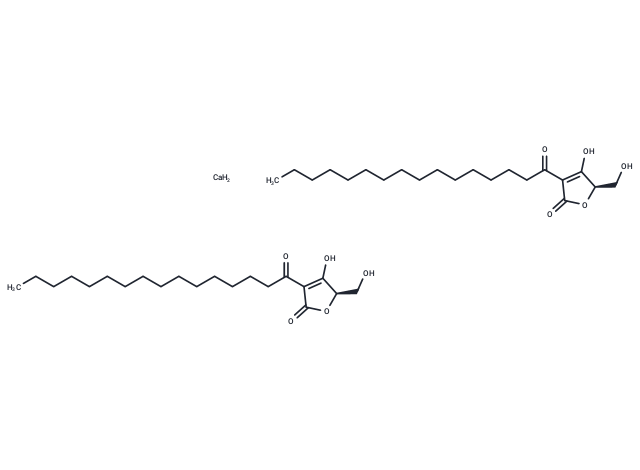- Remove All
 Your shopping cart is currently empty
Your shopping cart is currently empty
RK-682 (calcium salt)
Protein tyrosine phosphatases (PTPs) remove phosphate from tyrosine residues of cellular proteins. Reversible phosphorylation catalyzed by the coordinated actions of protein tyrosine kinases and phosphatases is key to the regulation of the signaling events that control cell growth and proliferation, differentiation, and survival or apoptosis, as well as adhesion and motility. RK-682, a bioactive compound originally isolated from the fermentation of Streptomyces sp. 88-682, is an inhibitor of the PTPs. It inhibits the phosphorylation of CD45 and VHR with IC50 values of 54 and 2 μM, respectively, and arrests cell cycle progress at the G1/S transition. It is also reported to inhibit heparanase (IC50 = 17 μM), an endo-β-D-glucuronidase involved in tumor cell invasion and angiogenesis. RK-682 (calcium salt) is a less soluble version of the free acid.

RK-682 (calcium salt)
| Pack Size | Price | Availability | Quantity |
|---|---|---|---|
| 500 μg | Inquiry | 35 days |
Product Introduction
| Description | Protein tyrosine phosphatases (PTPs) remove phosphate from tyrosine residues of cellular proteins. Reversible phosphorylation catalyzed by the coordinated actions of protein tyrosine kinases and phosphatases is key to the regulation of the signaling events that control cell growth and proliferation, differentiation, and survival or apoptosis, as well as adhesion and motility. RK-682, a bioactive compound originally isolated from the fermentation of Streptomyces sp. 88-682, is an inhibitor of the PTPs. It inhibits the phosphorylation of CD45 and VHR with IC50 values of 54 and 2 μM, respectively, and arrests cell cycle progress at the G1/S transition. It is also reported to inhibit heparanase (IC50 = 17 μM), an endo-β-D-glucuronidase involved in tumor cell invasion and angiogenesis. RK-682 (calcium salt) is a less soluble version of the free acid. |
| Molecular Weight | 779.122 |
| Formula | C42H74CaO10 |
| Cas No. | 332131-32-5 |
| Storage | Powder: -20°C for 3 years | In solvent: -80°C for 1 year | Shipping with blue ice. |
| Solubility Information | Methanol: Soluble Ethanol: Soluble DMF: Soluble DMSO: Soluble |
Calculator
In Vivo Formulation Calculator (Clear solution)
Dose Conversion
Tech Support

Copyright © 2015-2025 TargetMol Chemicals Inc. All Rights Reserved.




